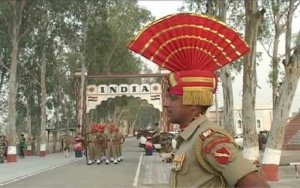Wagah border flag ceremony is a daily practice of lowering the national flags of India and Pakistan which have been jointly followed by both the nation since 1959. The lowering of the flag is performed by the BSF (Border Security Forces) from the Indian side and Pakistan Rangers from the side of Pakistan. It is performed at the Attari- Wagah Border. Attari is a village in the Amritsar district of Punjab state in India whereas Wagah is a village in the Punjab province of Pakistan.
The flag ceremony takes place every evening at the Attari- Wagah Border. The flag ceremony starts with a parade by the soldiers of both the countries and ends up in lowering the national flags of both countries. These are also called Beating Retreat border ceremony on an international level.
History of Wagah Flag Ceremony –
This ceremony between both countries was started in 1959 as a gesture of goodwill but slowly it turned to an aggressive event where the soldiers from both the sides show their power and love for their country.
At the time of the retreat, the border looks like a battleground, as the procession is conducted with loud shouts and heavy foot stomping by the soldiers. A form of marching where soldiers lift up their legs very high is known as “Goose Marching”. The procession continues for about 45 minutes.
About the Ceremony –
The ceremony starts with parades and ends with the lowering of the flag. The soldiers from both the sides lower the flags and then the folds the national flags of their country. After which soldiers from both sides handshakes with each other and then the iron gates at borders are closed. The ceremony also includes parades and the most famous “Goose Marching” where soldiers from both countries show the power by lifting their legs high. This March is one of the best things to be seen in the Wagah Border ceremony and people from both the sides gets filled with the sense of patriotism when they see these events.
National Anthem of both countries is played during the Wagah Border Ceremony. Many patriotic songs are also played which fills the peoples with the sense of patriotism. On some special occasions like the Independence day, some cultural programs are also organized. The soldiers of this ceremony are specially appointed and trained for this auspicious ceremony. They also have a beard and mustache policy for which they are paid additionally. This ceremony is organized every day since 1959. But when the warlike situation or border dispute between the two countries intensifies this ceremony is postponed for some days.
Some Important Information –
- a) Where is Wagah Border Situated?
Wagah is a village in Pakistan which is situated at a distance of about 29 km from Lahore(Pakistan) and 27 km from Amritsar (India). Wagah is situated on the Grand Trunk Road which connects India and Pakistan.
- b) How to attend the “WAGAH BORDER FLAG CEREMONY”
To attend the Wagah border flag ceremony from the Indian side, we have to visit Amritsar. From there you can take a public bus to the Attari station. After reaching Attari station you need to cover the 3 km distance to reach the place of the flag ceremony. We can cover the 3 km distance by cycles, private taxi or jeeps which are available at the Attari station.
- c) Timing of Flag Ceremony
The flag ceremony generally starts at around 5:15 PM in the summers and 4:14 PM during winters.
 Points to remember while visiting the Wagah Border Flag Ceremony :
Points to remember while visiting the Wagah Border Flag Ceremony :
- There is no ticket price for watching the ceremony. But seats in the ground can be booked in advance by going to BSF Kent located in Khasa village.
- If someone has not booked seats in advance then he/she must reach at the grounds of the ceremony at around 2:30 PM in winter and 3 PM in summers. It is important to remember that the seats are allocated on “first come first serve basis”.
- Mobile is allowed inside the ceremonial grounds and even photos and videos of the ceremony are allowed. Though the Mobile network is jammed in these areas.
Other Such Places –
There are some more places where similar ceremonies are held. The Mahavir/Sadgi border near Fazilka and Hussainiwala/ Ganda Singh Wala border near Firozpur are two places where similar parades are held. These ceremonies occur in smaller settings, and spectators tend to be local.
Conclusion –
Wagah Border ceremony was started to develop an atmosphere of mutual cooperation and is continued till now with the same objectives. Wagah Border Ceremony is also a good place for the civilians to understand the sacrifices done by the soldiers to protect the boundary of our country. It is a place which fills the sense of patriotism in every Indian. Every Indian should attend these ceremonies to feel the sense of joy and patriotism flowing in the air during the Wagah Border ceremony.


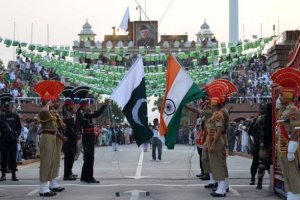
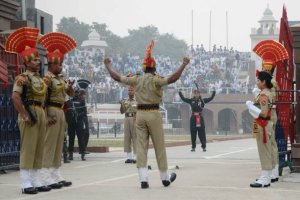
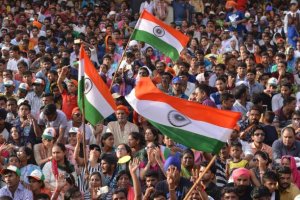
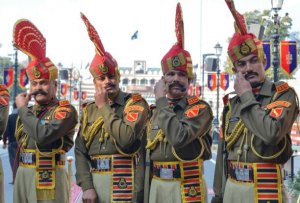
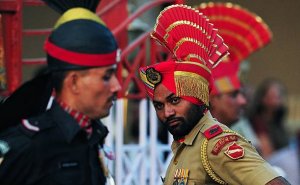 Points to remember while visiting the Wagah Border Flag Ceremony :
Points to remember while visiting the Wagah Border Flag Ceremony :